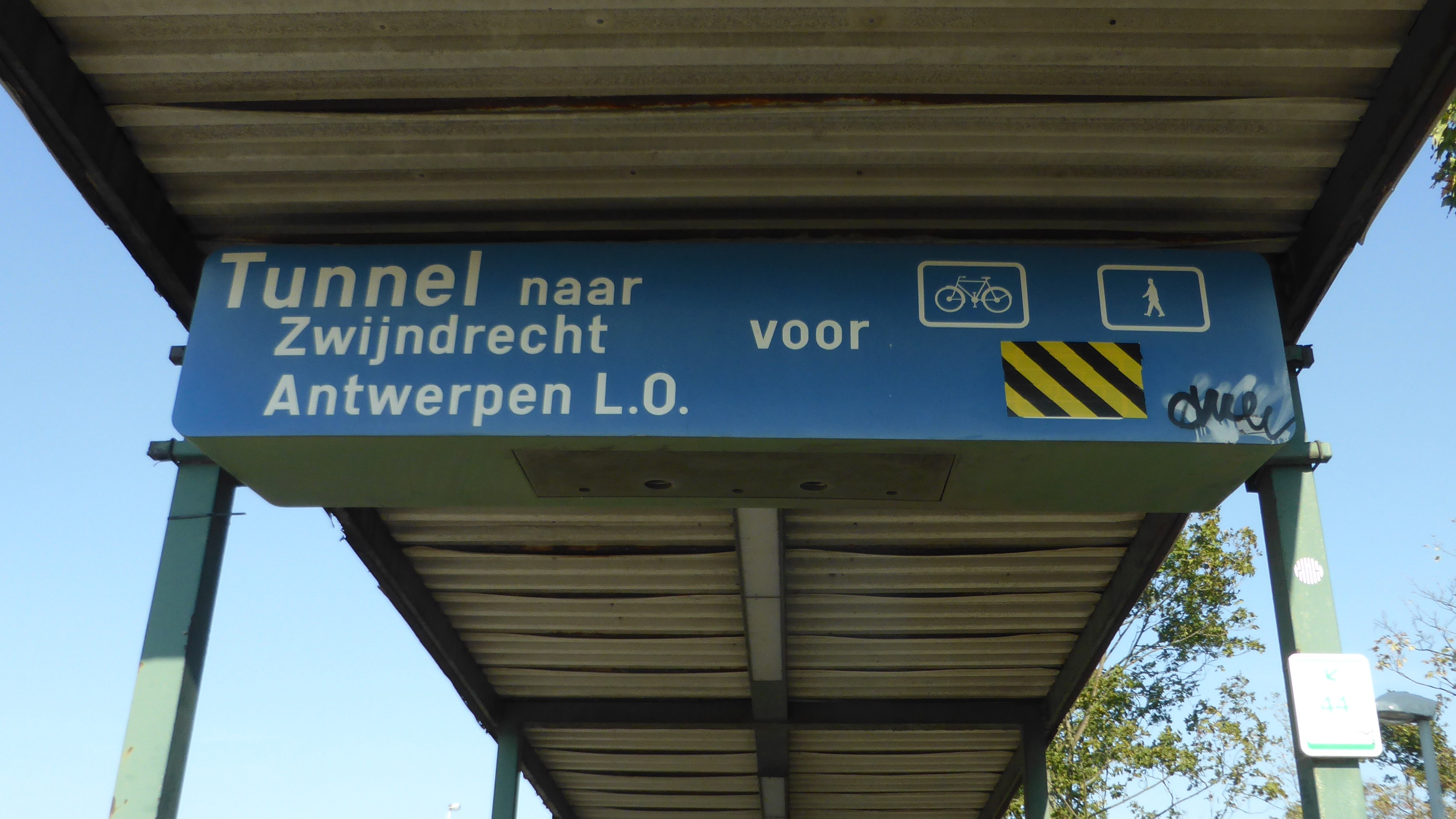
Underwater tunnels are not typical cycling facilities. But in a few cases, such tunnels provide an important cycling connection. The Kennedy tunnel in Antwerp is a part of both the TEN-T road network and the cycle highway network.
Kennedy tunnel is a road and cycling tunnel under the river Scheldt in the south of Antwerp. For drivers, it is a part of Antwerp ring-road. In the trans-European road network (TEN-T), it is a part of the North Sea – Mediterranean core corridor. For cyclists, it is the cycle highway FR10, connecting routes from Brussels, Ghent and Boom.
Car drivers travelling on the ring road usually do not even know there is a cycle tunnel next to the car tunnels. The entry for cyclists is difficult to notice from the motorway and better visible from city streets on both sides of the river.
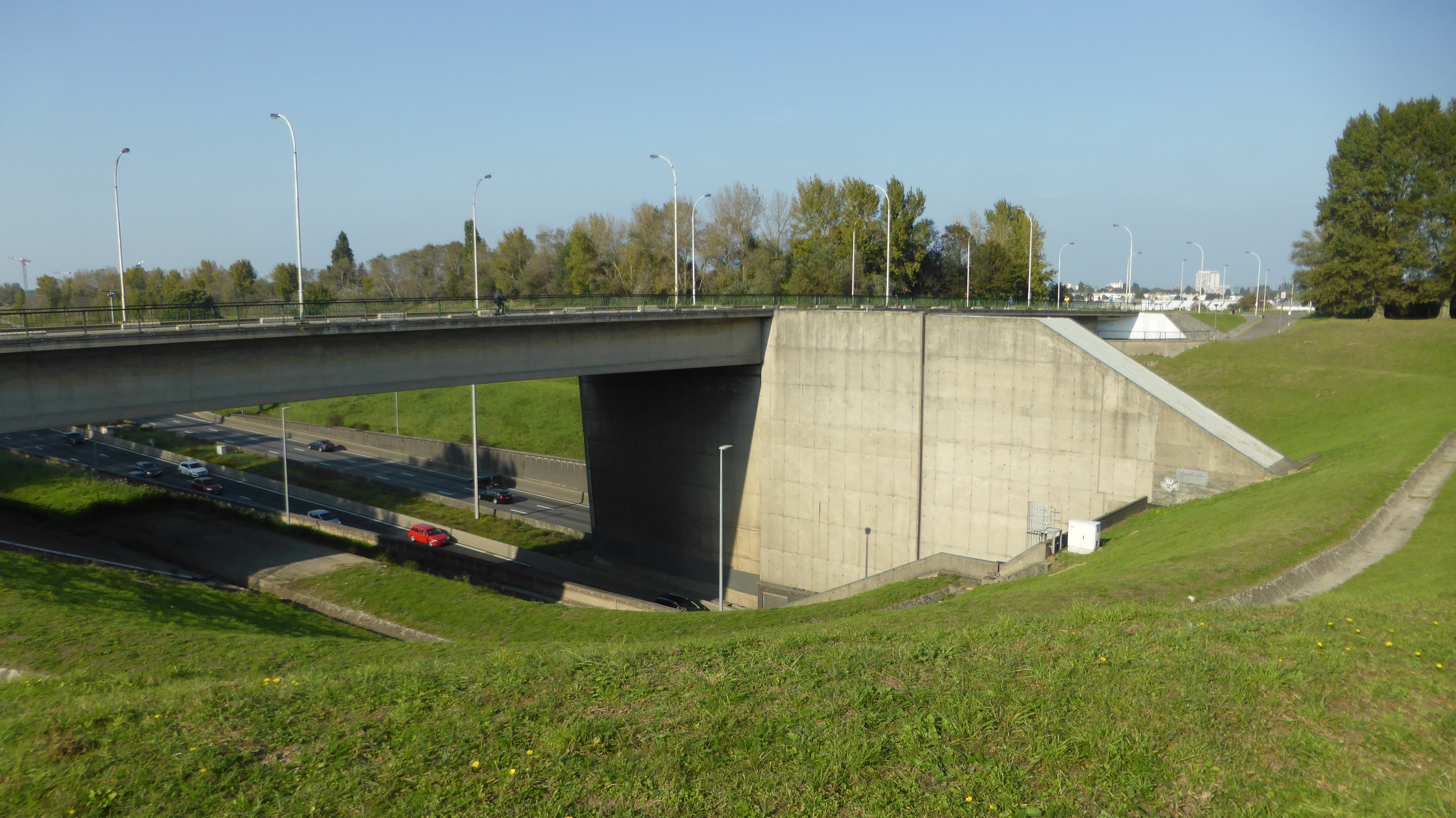
The access for cyclists is hidden inside the massive concrete structure between carriageways of the motorway. Drivers often do not even realise there is a cycling path in the tunnel.
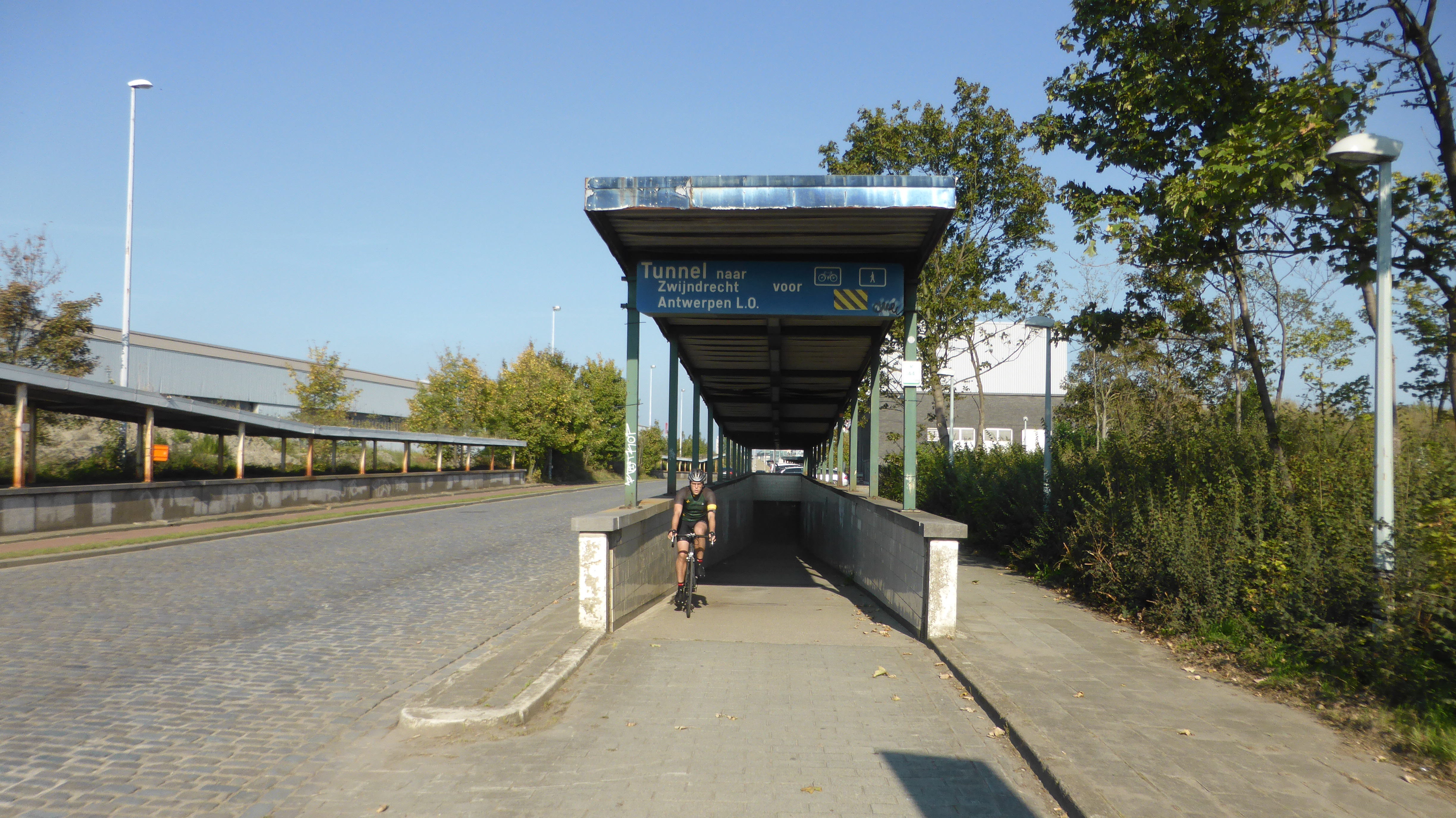
Entrance on the eastern bank.
The tunnel was built in the sixties, in times where car was still perceived as a part of future mobility, and cycling was temporarily out of fashion, so some solutions are clearly outdated. There is no escalator, only relatively small lifts and narrow stairs, which drastically reduces the capacity of the connection.
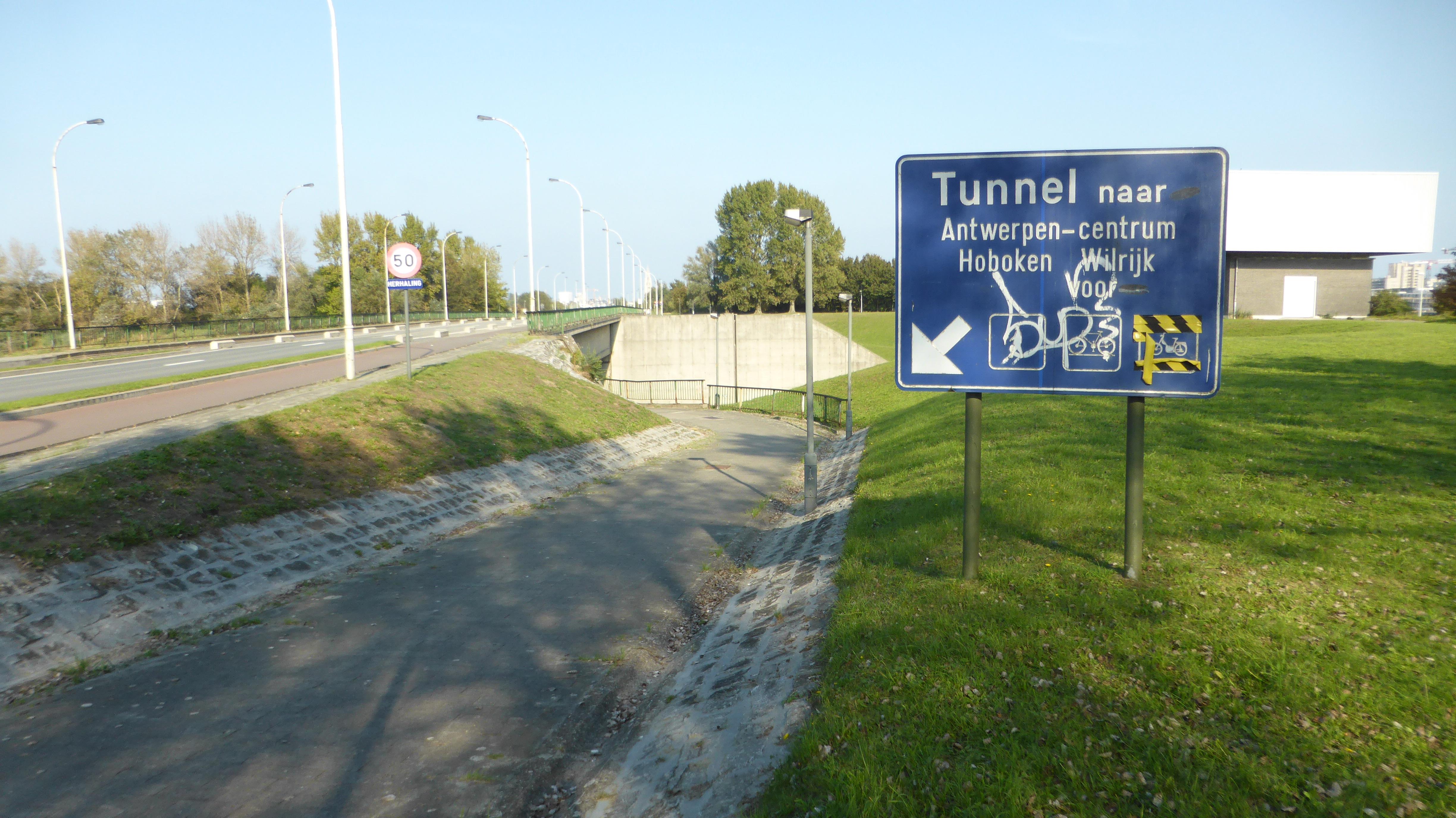
One of the ramps leading to the tunnel on the western bank.
Still, cycling facilities were integrated as a part of big motorway project, something that is not always guaranteed in more recent projects. At tunnel exits there are even underground intersections for cyclists that make it easier to access the tunnel from different cycle paths.
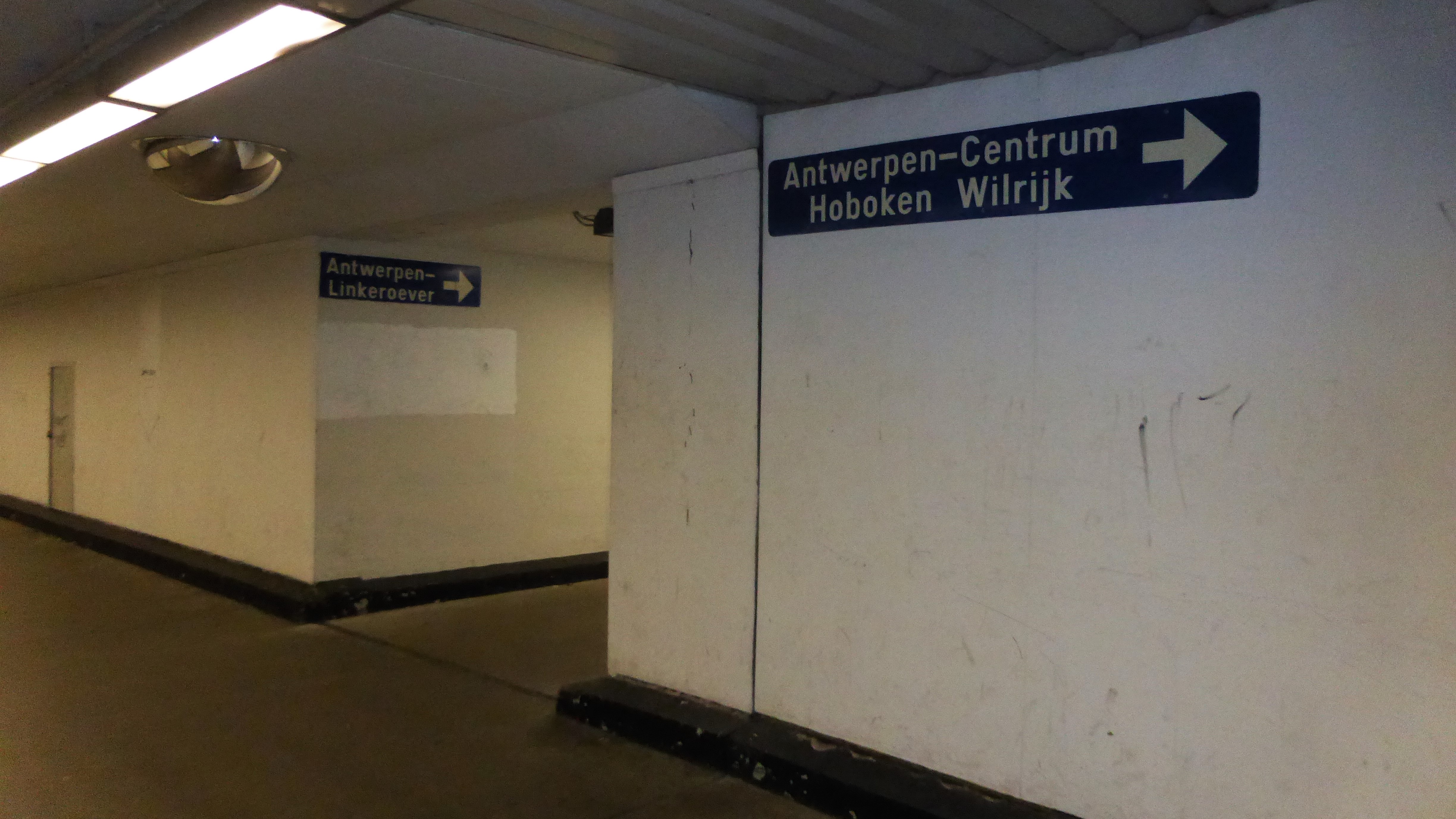
Intersection in the tunnel near the western entrance. Convex mirrors in the ceiling provides visibility around corners.
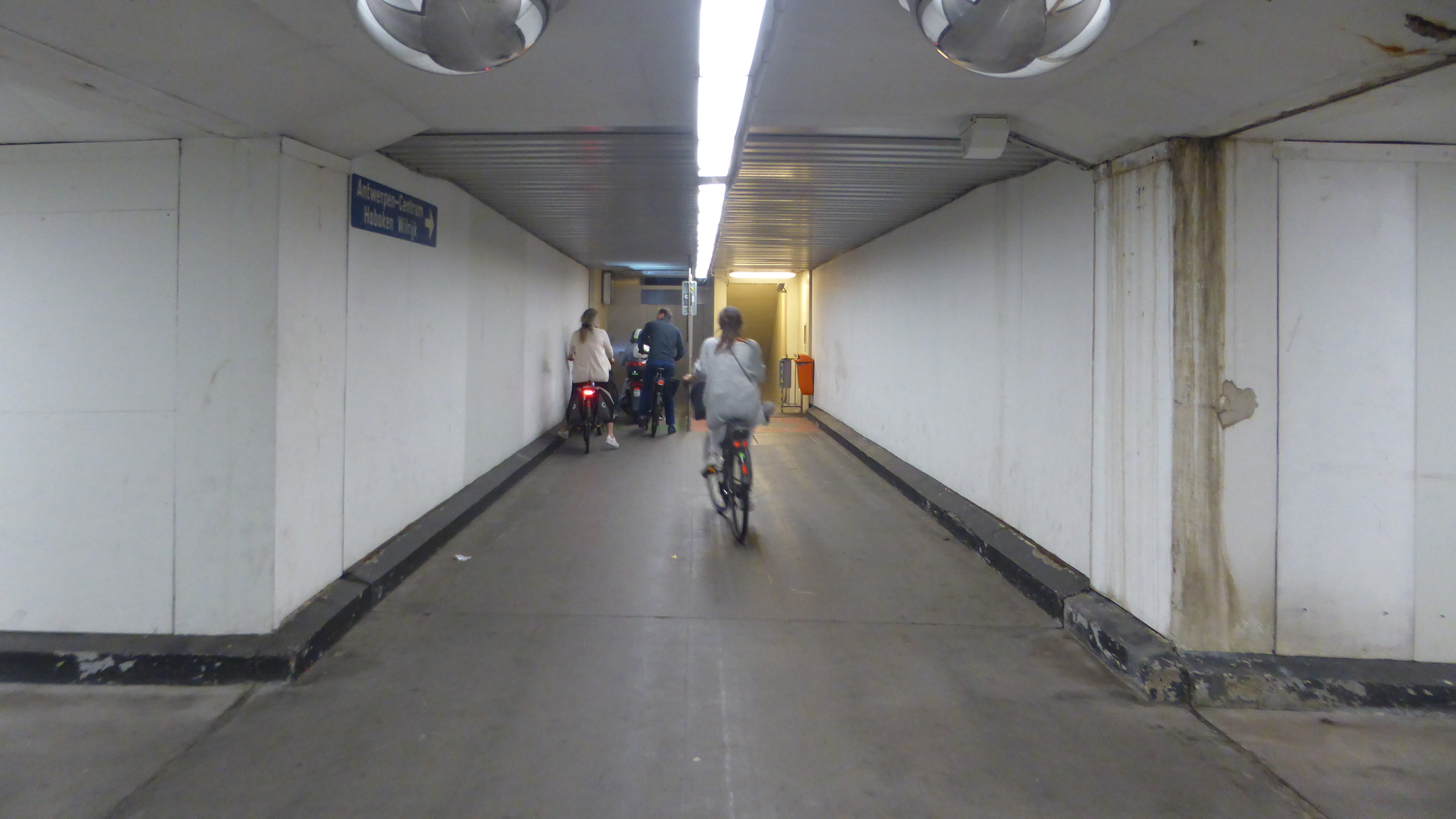
Access to the western lift.
